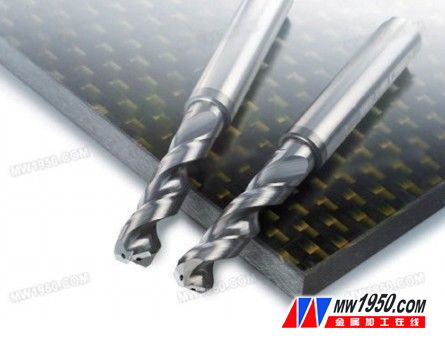Composite materials are different from other materials, and their hole processing is dominant. Drilling of composite materials is prone to defects such as tearing and fluffing of the exit of the hole; delamination of the material around the wall of the hole; rough and microcracking of the wall surface; splitting of the inlet; non-circular shape and large dimensional error. The axial force and the state of the cutting edge are the main causes of defects when drilling composite materials. Sandvik Coromant's CoroDrill 854 and CoroDrill 856 diamond-coated solid carbide drills enable reliable, efficient and high quality hole machining in composite processing. The CoroDrill 854 and CoroDrill 856 drills are standard coated N20C with a low coefficient of friction and a unique groove shape that reduces axial forces. In order to ensure the best hole quality, safety and manufacturing cost of single hole, choosing the right bit is the most important. In the case of fiber breakage or fluffing, it is best to use CoroDrill 854 drill with "Spurred" groove shape. The groove shape is to improve the quality of the outlet and inlet of the material hole with high fiber content. CoroDrill 856 drills are difficult for high resin content materials to control delamination defects because their double apex angle design allows the drill bit to drill in and out of the workpiece material smoothly, and the use of small apex angles and large rake angles helps to improve hole quality, Reduce axial force. Numerous cutting tests have shown that the new CoroDrill products excel in improving productivity and extending tool life. For example, when using CoroDrill854 to machine a 12.7 mm diameter hole on a CFRP epoxy coated aluminum alloy laminate (12mm + 12mm), the machining results are very satisfactory. At a cutting speed of 118 m/min and a feed rate of 0.05 mm/r, CoroDrill854 can process 650 holes of 24 mm thick laminate with a surface roughness of R a < 1.6 μm. Aluminum alloy) and R a < 3.2 μm (CFRP). The delamination when drilling CFRP is minimal, and the height of the burr when exiting from the aluminum alloy is also within the allowable range of 0.2 mm. Metal processing online related reading    milling cutter,Indexable Ball Nose End Mill,Corn Teeth End Mills.Diamond Coated Drill Bit JIANGYIN GOLD STAR INDUSTRY CO.,LTD , https://www.jygoldstarindustry.com
Sandvik Coromant CoroDrill 854 and CoroDrill 856 Drill